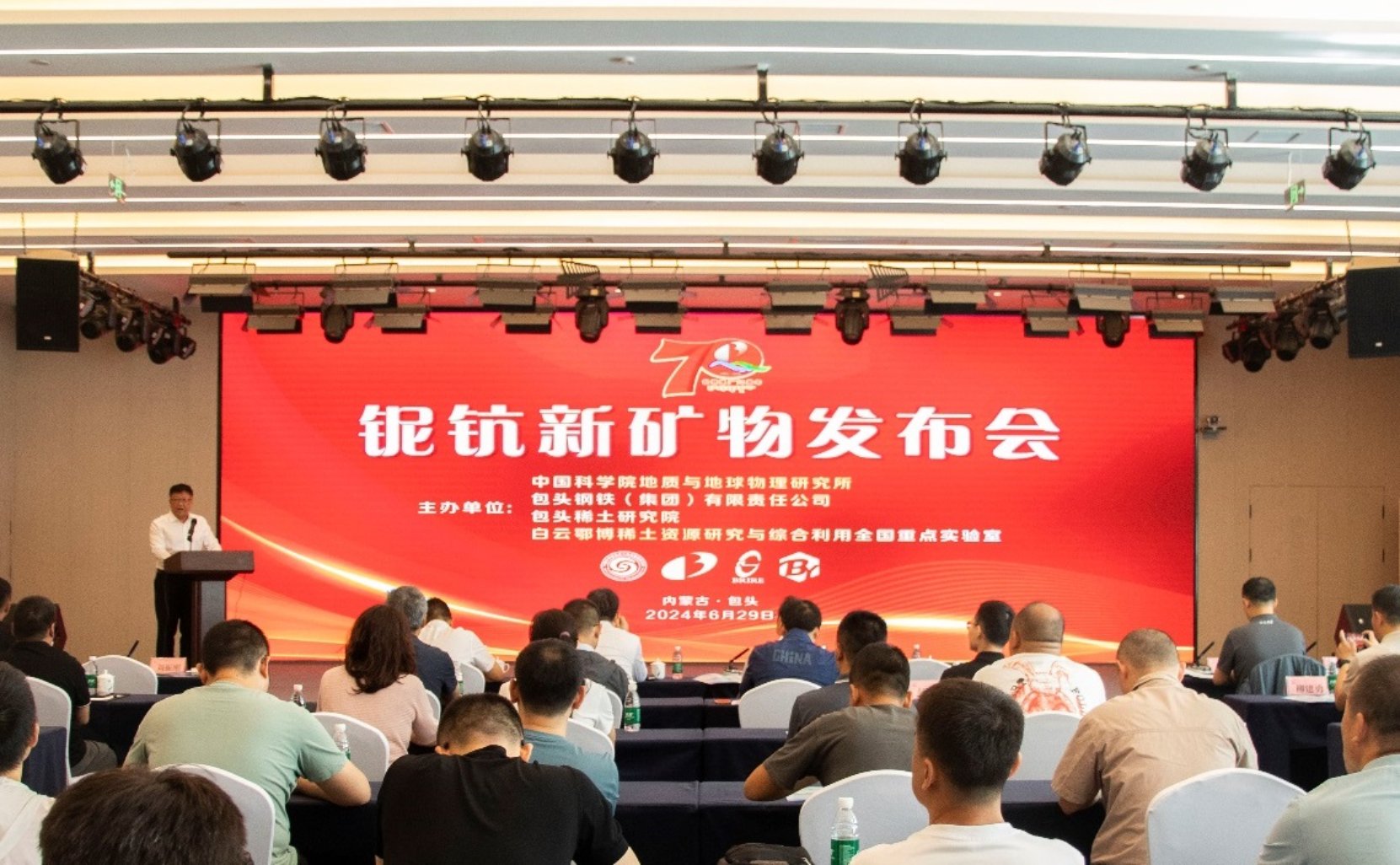In cooperation with Baotou Steel (Group) Company, Baotou Research Institute of Rare Earth, Central South University, and other organizations, IGGCAS, has discovered two new strategic metal minerals in Bayan Obo rare earth deposit. These minerals, officially named Oboniobite and Scandio-fluoro-eckermannite, were approved by the International Mineral Association's New Mineral Naming and Classification Committee on May 3 and June 3, 2024, respectively. A press conference to announce these discoveries was held in Baotou City on the morning of June 29. Academician Li Xianhua presented the findings on behalf of the Institute, and researcher Fan Hongrui provided detail information on the new minerals. This significant achievement was widely reported by Xinhua News Agency and other media outlets.
The Bayan Obo Mine, the world's largest rare earth deposit, also contains substantial quantities of iron, niobium, scandium, thorium and fluorite, making it of immense economic and strategic importance. Since Ding Daoheng discovered iron ore in Bayan Obo in 1927, over 200 types of minerals have been identified in this deposit. Notably, 18 new minerals, including Baotou ore, white pigeon ore, and yttrium barium dolomite, have been discovered since 1959. The newly discovered minerals, Ebo niobite and Scandio-fluoro-eckermannite, are the 19th and 20th new minerals from this deposit.
Niobium and scandium are critical resources associated with the Bayan Obo deposit. These metals have indispensable applications in new materials, new energy, information technology, and other emerging industries. However, their research and development have been limited. Since 2021, the research team led by Fan Hongrui, leveraging academician Li Xianhua's workstation in Baotou Steel and related scientific projects, has conducted systematic mapping and sampling in Bayan Obo. During detailed mineralogy research, two minerals with "abnormal" chemical compositions were identified: Oboniobite and Scandiophane-fluoro-eckermannite.
When Mr. He Zuolin of our institute discovered rare earth ore in Bayan Obo in 1934, cerium fluorocarbon was named Ebo mine due to the limitations of the conditions at that time. The new mineral Oboniobite is named to honor IGGCAS’s continued innovative work building on past discoveries. Scandio-fluoro-eckermannite is the first new scandium-containing mineral discovered in China and is named after Zhai Mingguo, an academician at our Institute, in recognition of his outstanding contributions to mineral deposit research in China.

Niobium and Scandium new mineral conference site (Photo by Baotou Research Institute of Rare Earth)